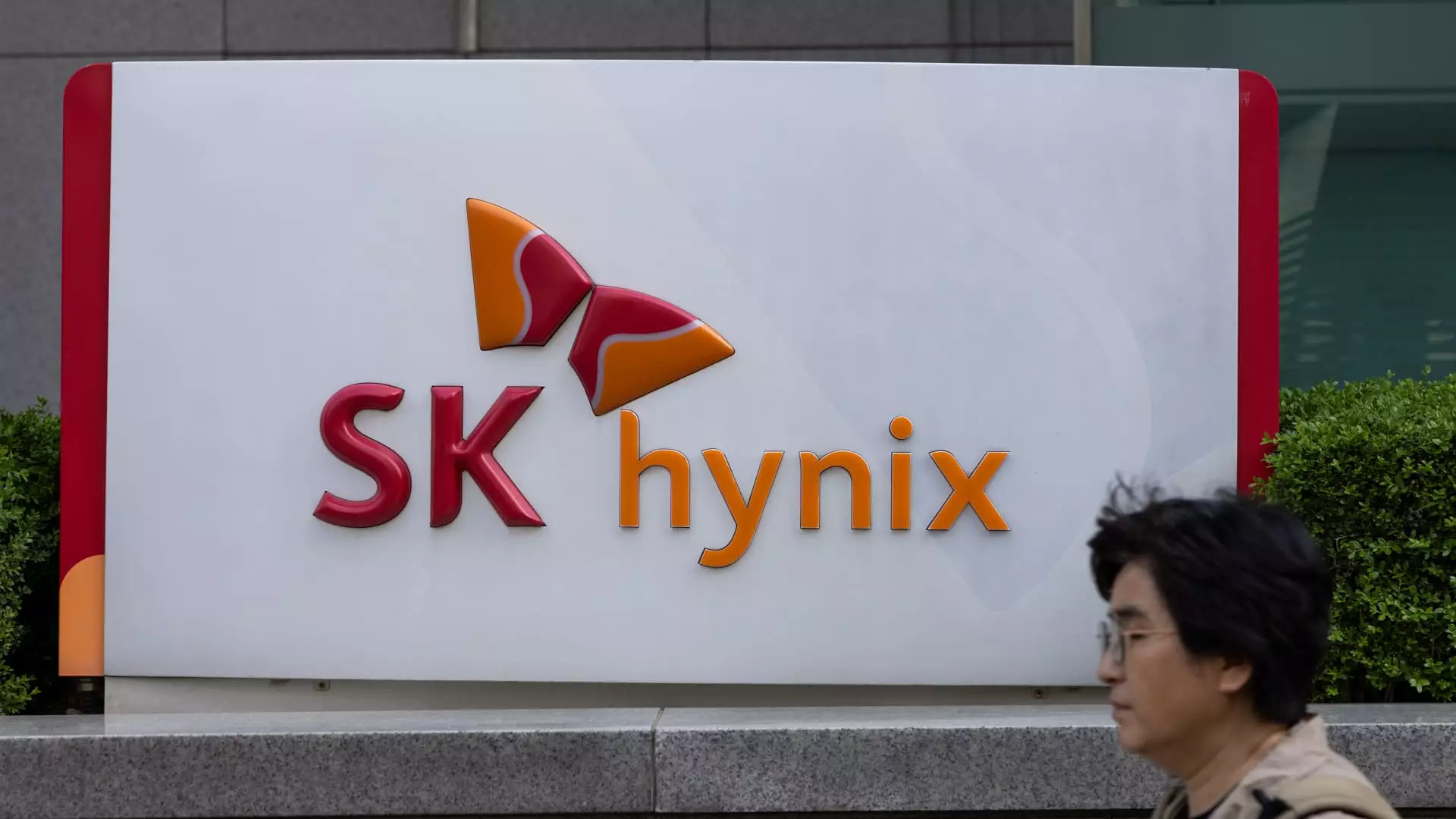SK Hynix, a South Korean semiconductor powerhouse, has recently reported impressive earnings for the fourth quarter, driven largely by the soaring demand for high bandwidth memory (HBM) associated with generative AI technologies. Their revenue reached approximately 19.77 trillion won ($13.7 billion), while operating profits climbed to an astonishing 8.08 trillion won ($5.6 billion). This represents a remarkable year-on-year revenue increase of 75% and an astronomical 2,236% surge in operating profit. Such figures not only underscore the company’s dominant position in the memory chip market but also reflect the larger trend of increasing reliance on artificial intelligence and machine learning across various industries, positioning SK Hynix favorably as a key supplier for prominent companies like Nvidia.
Despite these compelling numbers, SK Hynix’s shares saw a decline of 2.7% following the results announcement. The underlying reason for this drop can be traced back to cautious remarks made by CFO Kim Woohyun regarding potential market uncertainties in 2025. The landscape for memory demand could shift dramatically due to necessary inventory corrections among PC and smartphone manufacturers, as well as the increasing prevalence of protective trade measures and geopolitical tensions. Investors, therefore, were prompted to reassess their expectations, weighing impressive current performance against an uncertain horizon.
The company’s strength in HBM technology is worth examining more closely. HBM memory involves a sophisticated stacking technology that enhances space efficiency and power consumption, granting it a competitive edge over traditional DRAM solutions. As memory markets evolve, SK Hynix has adeptly maneuvered itself through the complexities of technological advancements, ensuring that it remains relevant and at the forefront of innovation.
Industry analysts note that Micron Technology and Samsung Electronics also hold significant positions in this market. Yet, SK Hynix distinguishes itself with a clear focus on high-performance and quality-driven production, responding to shifting consumer demands. As emphasized by Kim Woohyun, the industry is in transition from a traditional commodity market that emphasizes volume sales to one that prioritizes customized, high-performance solutions tailored to specific client needs.
Examining its annual performance, SK Hynix posted record yearly revenue, exceeding the previous high recorded in 2022 by over 21 trillion won. Operating profits also surpassed those during the 2018 semiconductor boom, illustrating not just a momentary surge but a sustained growth trajectory. SK Hynix’s management is optimistic, projecting a moderate increase in capital expenditures in 2025 compared to the previous year, suggesting an intent to further invest in capability enhancements and expansions to meet rising demands.
Amidst this optimism, however, they also anticipate fluctuations in market demand. The outlook for HBM and other DRAM products remains largely dependent on significant investments from major tech firms in AI servers and applications. There’s an acknowledged potential for consumer markets, especially those related to PC and smartphone sales, to recover as the year progresses, highlighting a dual-track growth of both enterprise-level demand and consumer-based sales.
While growth opportunities abound, substantial challenges must also be addressed. The semiconductor market is notoriously cyclical and sensitive to external factors such as global trade dynamics and macroeconomic pressures. The semiconductor industry has always operated in a landscape shaped by rapid innovation and strong competition, and with increasing geopolitical volatility, firms like SK Hynix must remain agile. The warning regarding demand uncertainties in 2025 highlights the need for contingency strategies to buffer against external shocks or abrupt market shifts.
As the market transits into an era driven by advanced technologies and AI integration, stakeholders must remain vigilant and proactive. The company’s strategic focus on high-quality memory solutions will be its mainstay as it braces for future winds of change—both celebratory and disruptive. The evolving landscape of consumer preferences and enterprise needs will necessitate continuous adaptation, making SK Hynix a keen observer to watch as the semiconductor saga unfolds.
While SK Hynix revels in record-breaking earnings driven by historical demand, the duality of opportunity and uncertainty urges a balanced focus on both innovation and adaptability for sustained success in a fast-paced industry.

